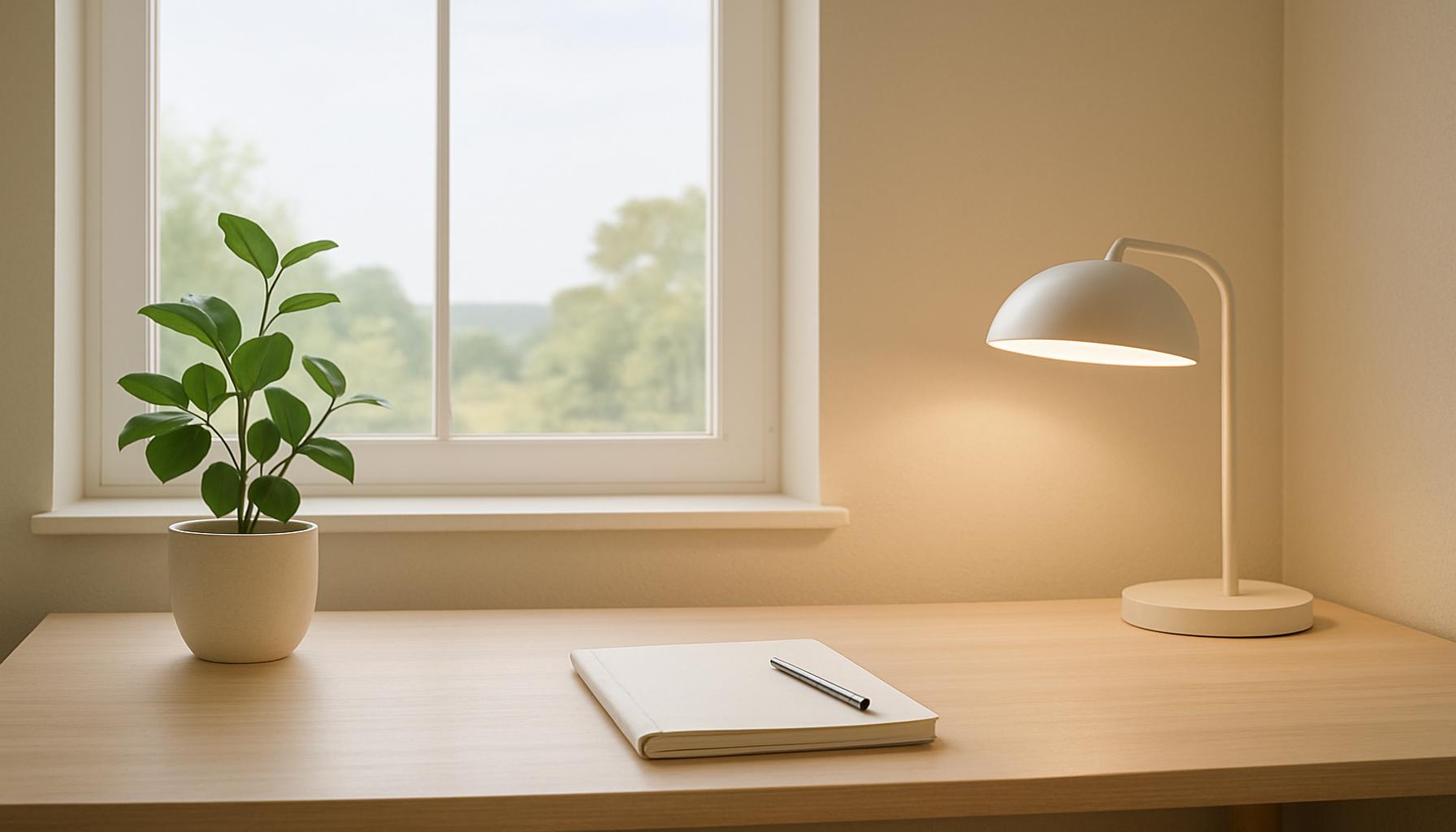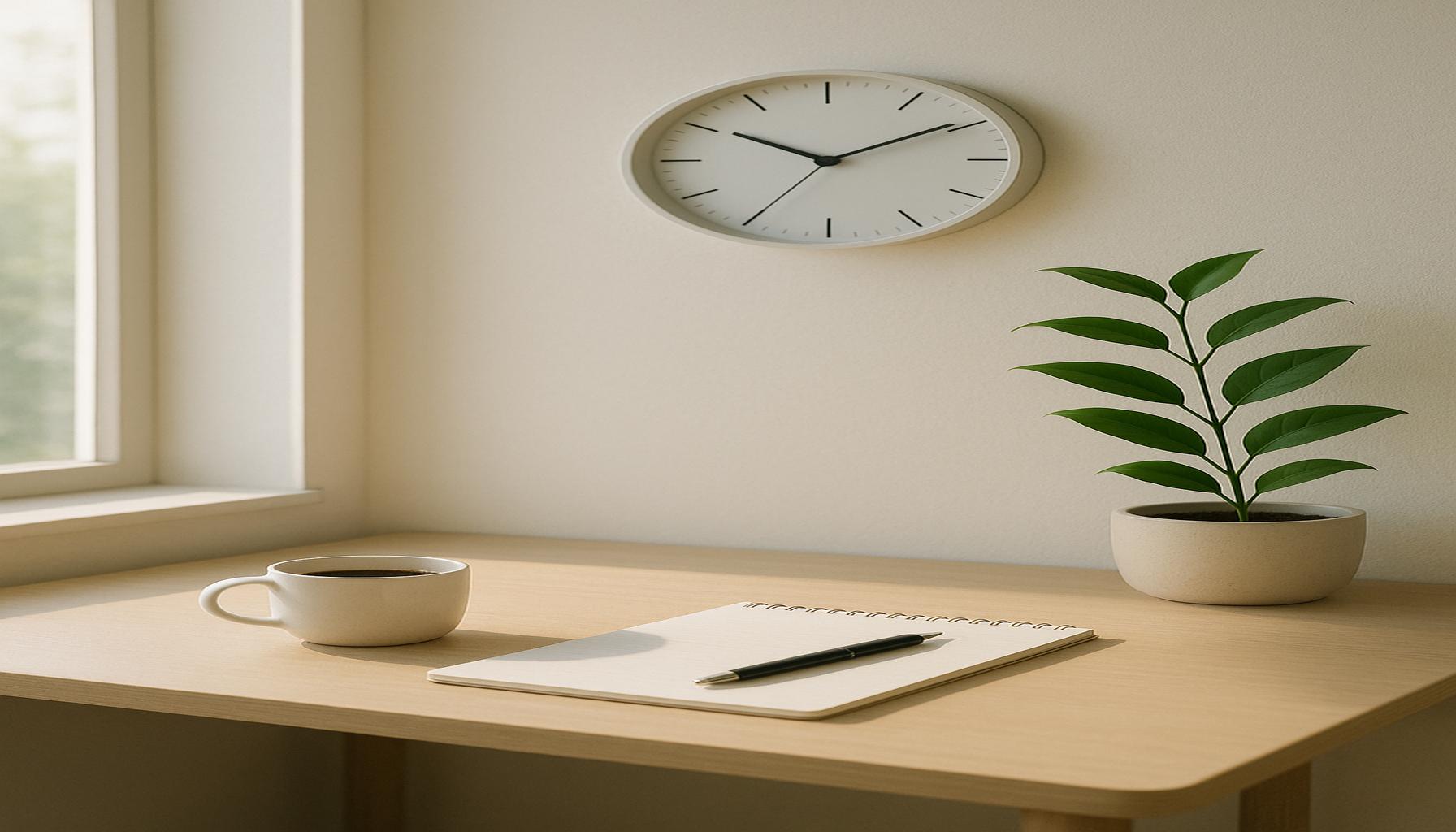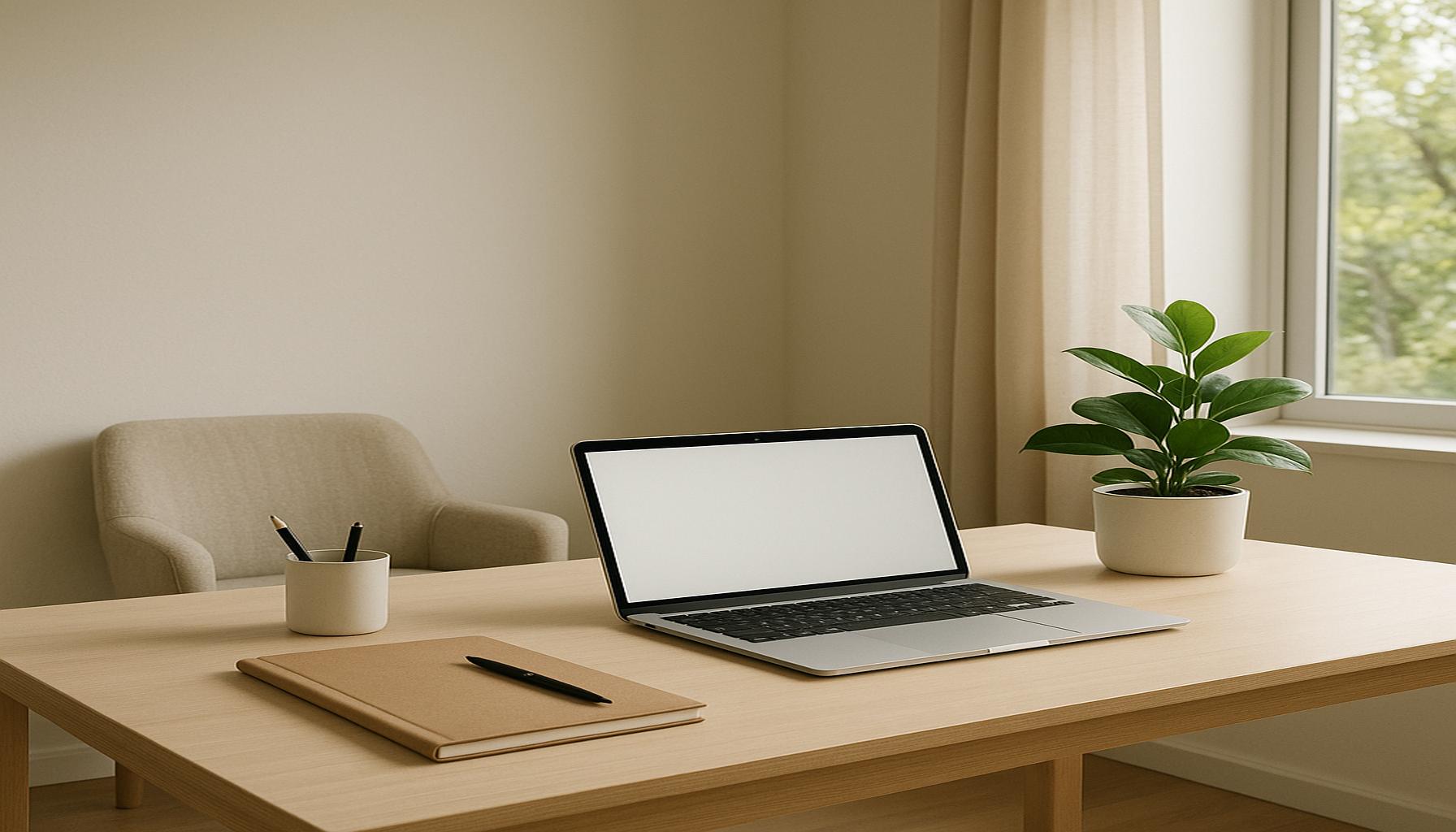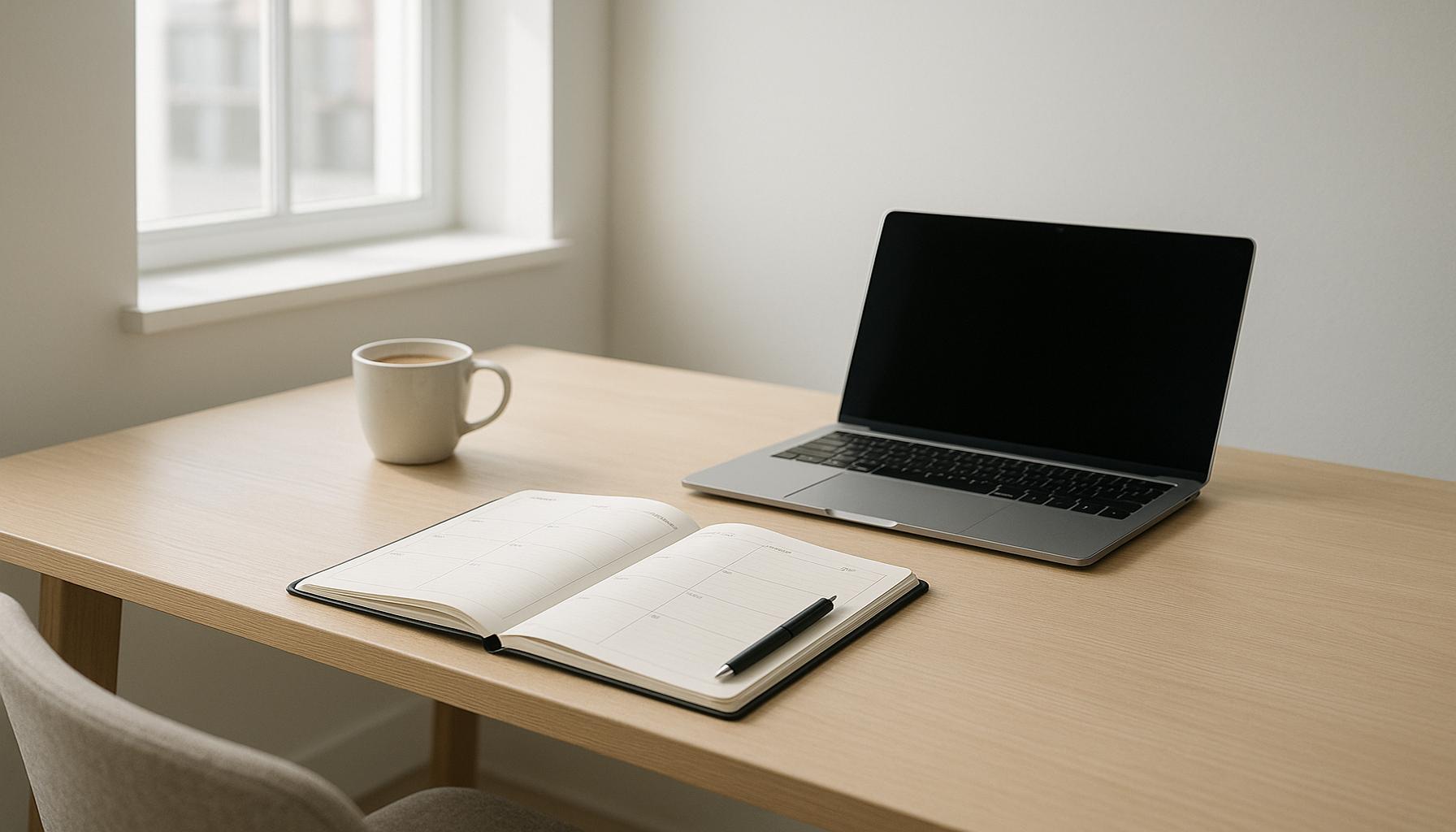Minimalist Strategies to Reduce Mental Overload and Increase Efficiency

Understanding the Impact of Mental Overload
In our fast-paced society, mental overload has become a common ailment. The constant barrage of emails, social media notifications, and a seemingly endless to-do list often leave individuals feeling drained. It’s not just a fleeting sensation; research has shown that chronic stress and overload can have detrimental effects on both mental and physical health. The good news? By embracing minimalist strategies, we can enhance focus and efficiency, transforming our chaotic lives into streamlined experiences.
Streamlining Your Environment and Mindset
Imagine entering a serene space that calms your mind. This is the essence of decluttering; a tidy environment fosters a clear mind. By removing unnecessary items from your workspace, you can create an atmosphere conducive to concentration and creativity. This could mean anything from tidying your desk to organizing your virtual workspace by removing distracting apps from your phone or computer. A recent study showed that employees who work in organized environments are 30% more productive.
Learn to Say No
Another critical aspect of minimalism is to limit your commitments. In a culture that often celebrates busyness, it can be difficult to say no. However, taking a stand against unnecessary obligations is crucial for maintaining mental well-being. For example, volunteering for every committee at work or attending every social gathering can drain your energy. Instead, consider which activities align with your values and contribute positively to your life. Saying no might feel uncomfortable at first, but it ultimately allows you to reserve your energy for what truly matters.
Prioritize Mindfully
To maximize your productivity, it’s vital to prioritize tasks. This involves identifying what’s essential and focusing on those tasks first. Techniques such as the Eisenhower Box can help sort tasks into categories based on urgency and importance, allowing for clearer decision-making. Additionally, breaking larger goals into smaller, manageable tasks makes it less daunting and keeps you motivated. For instance, if you’re working on a project with a looming deadline, dissect it into phases such as research, drafting, and revisions, tackling each step systematically.
Although adopting these minimalist principles may seem daunting at first, the long-term benefits are profound. Research increasingly supports that minimalism not only promotes better decision-making but also reduces anxiety, positioning individuals to perform at their best. By implementing these strategies, you could radically transform your daily routine, paving the way for a fulfilling and productive life.
The Journey Toward Simplicity
As you embark on this journey towards simplicity, prepare to discover effective techniques that suit your lifestyle and enhance your productivity. Embrace the notion that a clear mind and a simplified approach are stepping stones to achieving greater efficiency. By decluttering your life, limiting your commitments, and focusing on what genuinely matters, you can unlock the potential for increased joy and productivity amidst the chaos around you.
DON’T MISS: Click here to discover the power of minimalism
Creating a Minimalist Mindset
Embracing minimalism goes beyond just decluttering physical spaces; it’s a comprehensive mindset that nurtures simplicity in every aspect of life. This approach can be particularly effective in alleviating mental overload. By reducing distractions and streamlining commitments, individuals can foster clearer thinking and enhanced decision-making capabilities. Here are some key strategies to help cultivate this minimalist mindset:
Transforming Your Information Diet
In an age where information is abundant, it’s easy to suffer from what’s termed as “information overload.” To combat this, consider pruning your digital intake. Start by evaluating the sources from which you consume news and social media. Are they serving a purpose, or do they merely contribute to anxiety? Select a few trusted outlets, and limit your daily intake to ensure that the information you receive is relevant and enriching.
Additionally, consider employing tools that help filter and manage notifications. The use of productivity applications can keep you organized and focused while aiding in avoiding the overwhelming influx of information. The objective is to curate your digital environment, creating a space that nourishes rather than depletes your mental energy.
Engaging in Mindful Practices
Mindfulness is a powerful technique that when paired with minimalism, can greatly reduce mental strain. By adopting practices such as meditation or journaling, you can create mental clarity and emotional balance. Some engaging approaches include:
- Daily Meditation: Even a few minutes of meditation each day can help clear your mind and improve your focus.
- Journaling: Writing down thoughts, tasks, and feelings can reduce mental clutter and provide insight into priorities.
- Mindful Breathing: Taking deep, purposeful breaths can ground you in moments of overwhelm.
Integrating these practices into your routine allows you to respond to stressors more effectively, as you cultivate a peaceful mindset that supports your overall well-being.
Adopting a “One In, One Out” Rule
Another valuable strategy involves the “One In, One Out” rule, a concept typically applied to physical possessions but can also extend to time and energy commitments. Whenever you add a new task or commitment to your schedule, ensure that you remove another. This helps maintain balance and prevents the accumulation of responsibilities that can lead to overwhelm.
For instance, if you decide to take on a new project at work, consider whether it’s time to step back from an existing commitment to free up time and mental space. This proactive approach ensures that you’re always in control of your time, leading to greater focus and efficiency.
By slowly implementing these minimalist strategies into your life, you can effectively reduce mental overload and propel yourself toward increased efficiency. Remember, minimalism isn’t an end goal; it’s an ongoing journey of simplification that can yield significant benefits in both your personal and professional endeavors.
| Strategy | Advantages |
|---|---|
| Decluttering your workspace | Promotes focus by minimizing distractions. A clean environment enhances clarity, allowing you to engage deeply with your tasks. |
| Time blocking | Enables you to allocate specific periods for tasks, thereby reducing mental overload and enhancing productivity by maintaining a structured schedule. |
Exploring these minimalist strategies provides a pathway to not only reduce mental overload but also streamline your workflow effectively. By implementing practices like decluttering your workspace, you foster a sense of calmness that is vital for focused productivity. Moreover, engaging in time blocking helps maintain a balance between various responsibilities, ensuring that each task receives the attention it deserves without overwhelming your cognitive load. As you delve deeper into these strategies, you will discover their practical applications and how they can transform your daily routine, ultimately leading to increased efficiency and a healthier mental state.
DIVE DEEPER: Click here to discover how minimalism can transform your life</a
Maximizing Productivity Through Minimalist Routines
To enhance efficiency while minimizing mental overload, establishing a set of simplified daily routines can be a game-changer. These routines streamline decision-making and reduce the cognitive load of constant choice, allowing individuals to focus on what truly matters. Here are effective ways to implement minimalist routines:
Time Blocking for Clarity
Time blocking is a method where specific blocks of time are allocated to certain tasks or activities throughout your day. By giving each task its dedicated time slot, you create a structured environment that enhances focus and productivity. For instance, instead of working on tasks sporadically throughout the day, block off an hour in the morning solely for emails and another hour for project work in the afternoon. This approach helps in prioritizing important tasks while preventing the mental turmoil that comes from frequent task-switching.
To implement time blocking effectively, begin by analyzing how much time you typically spend on various activities. From there, designate blocks on your calendar and treat them as non-negotiable appointments. This discipline can dramatically reduce procrastination, ultimately fostering a balanced workload.
Decluttering Your Task List
Just as physical spaces can become cluttered, so too can our mental landscapes with overstuffed to-do lists. It’s vital to engage in regular task list decluttering. Focus on evaluating your current obligations. Are there tasks that no longer serve a purpose, or could be delegated? Consider the two-minute rule, which suggests that if a task can be completed in two minutes or less, do it immediately. By keeping your task list manageable and actionable, you create mental space for higher-priority projects.
Employing technology can also play a crucial role in managing your task list. Utilize applications such as Todoist or Trello to categorize and prioritize tasks visually. This not only makes it easier to track progress but also helps relieve the mental burden of remembering everything you need to accomplish.
Implementing a Digital Detox
In an era dominated by screens, initiating a digital detox can be pivotal in reestablishing mental clarity. Setting aside specific times during your day to disconnect from devices can reduce stress levels and enhance creativity. Designate “tech-free” times or zones within your home, and use these breaks to engage in analog activities—whether it’s reading a book, going for a walk, or enjoying a hobby. Research has shown that reducing screen time can lead to decreased anxiety levels and increased overall well-being.
This practice not only supports mental health but can subsequently heighten efficiency during your designated active hours. With a clear mind and a fresh perspective, you’ll be better equipped to tackle tasks efficiently.
By incorporating these minimalist strategies into your daily life, you can significantly minimize mental overload while augmenting your overall productivity. Striving for simplicity allows for a more intentional approach to your time and responsibilities, paving the way for both personal satisfaction and professional success.
DISCOVER MORE: Click here for insights on minimalism
Finding Balance and Clarity: The Path Forward
In today’s fast-paced world, the burden of mental overload can hinder our efficiency and overall well-being. By embracing minimalist strategies, we can pave the way towards a more productive and fulfilling life. The key lies in simplifying our routines and prioritizing what truly matters. Whether it’s through time blocking to structure our days, task list decluttering to lighten our cognitive load, or implementing a digital detox to reconnect with ourselves, these approaches are essential in enhancing focus and mental clarity.
Moreover, it’s important to recognize that minimalism is not merely about doing less; it’s about making intentional choices that align with our core values and aspirations. As you explore these strategies, consider how each one can be integrated into your unique lifestyle. Delve into new tools and practices, experiment with different approaches, and remain open to adjusting your methods over time. Remember, the journey towards minimalism is a personal one, filled with opportunities for self-discovery and growth.
As you apply these minimalist principles, you’ll likely find that not only does your productivity increase, but your mental state becomes markedly clearer and more peaceful. In a society where distractions abound, taking the minimalist path is more than a trend—it’s a necessary response to reclaiming our time, energy, and mental health. So, take the first steps today, simplify your processes, and watch as your efficiency and well-being soar.


